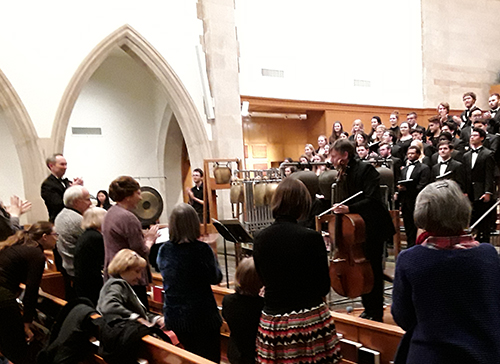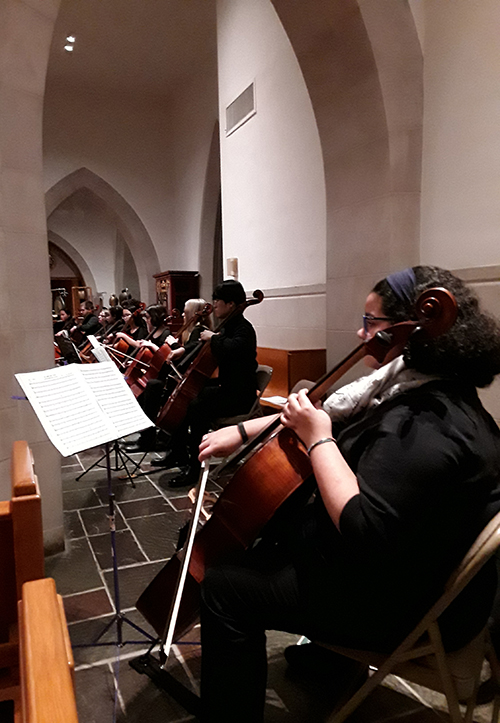by Daniel Hathaway

While those forces waited patiently, Studio 207 — a quartet of students of Mark Kosower at the Cleveland Institute of Music — opened the evening with the charming Glass Bamboo Frog Consort by Venezuelan composer Paul Desenne. Named for a species of rainforest frog, the eight-minute piece has been described as hauntingly close to the sounds those amphibians make in the wild.
In the hands of Daniel Kaler, Eleanor Lee, Richard Li, and Mingyao Zhao, its undulating textures were hypnotic, even when things became more lively, then tapered off into nothingness at the end.
John Luther Adams is famous for his often prolix evocations of nature. His Sky with Four Suns and Sky with Four Moons, representing in music the curious Alaskan illusion of multiple lights in the sky seen through ice crystals, are relatively brief but no less striking. Oberlin choral professor Gregory Ristow led a mesmerizing performance, cuing his forces from the center aisle with a set of special gestures that included patting himself on the head. Sun and moon used different registers of the four cello choirs, the moon sounds deeper in timbre.

The arrangement worked well, even if Thompson’s carefully structured dynamics weren’t always realized, and although the wide dispersal of the performers created a few ensemble challenges. The spirit of the performance was lovely, and the sonic effect glorious.

The piece held you in its thrall for nearly 40 minutes, breaking out at several junctures into rapturous episodes of vocal solos and shouting. The audience was totally absorbed in this thrilling and arresting performance. This will be a difficult act to follow with the next ‘i Cellisti!’
Published on ClevelandClassical.com January 14, 2019.
Click here for a printable copy of this article

